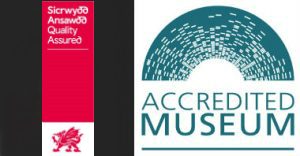Swansea has always had an association with trade, and even in Elizabethan times the banks of the River Tawe were lined with loading stages and quays.
Links were established with London, Bristol and Cornwall and as Swansea developed its industrial hinterland so the links went further afield. Copper barques and Cape Horners took Welsh coal out and returned with copper-ore from South America.
Swansea’s first canal, built in 1784, underwent a radical change in scale with industrialisation when a decade later the construction of the seventeen-mile Swansea Canal became the largest engineering task undertaken in eighteenth century Swansea.
The railway network too expanded to meet the demands of industry with input from Isambard Kingdom Brunel. 1852 saw the construction of the North Dock, the first floating dock in Swansea followed by four more docks constructed over a period of sixty-eight years.
Such a high density of industry required a large supply of labour all needing accommodation. Copper-masters like the Grenfells built terraced homes for their workforce, expanding Swansea in the direction of St.Thomas, while John Morris pioneered high-rise accommodation in the design of Morris Castle.
Find out more…
Read more about industry in Swansea… Diversification from Copper

